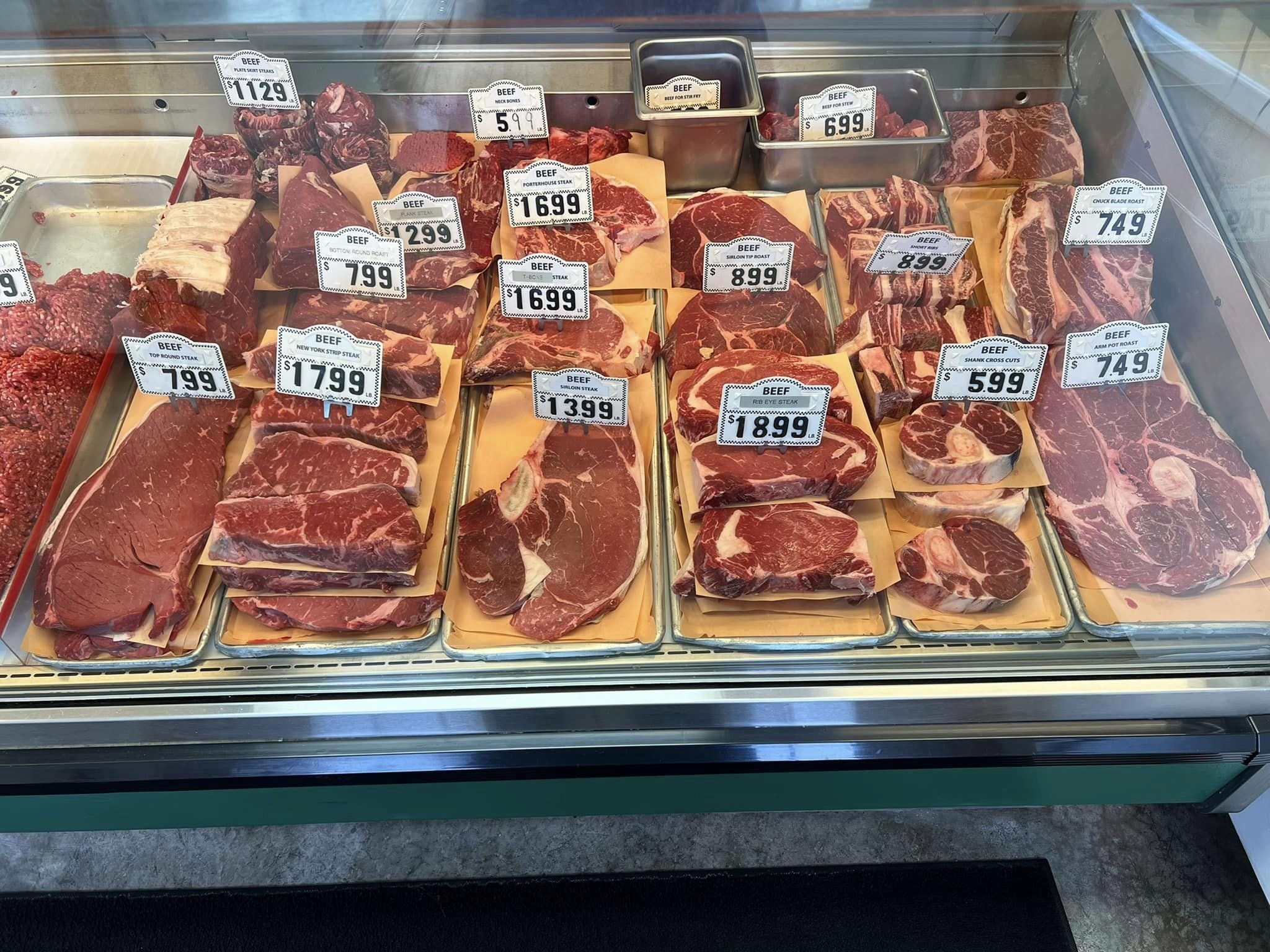This local meat market offers fresh, locally-sourced meats for all your needs.
This local meat market offers fresh, locally-sourced meats for all your needs.
Blog Article
Exactly How to Choose the Perfect Cut of Meat From a Trusted Meat Market
Choosing the perfect cut of meat from a trusted meat market needs a thoughtful approach that balances quality, culinary purpose, and budget. Recognizing the numerous kinds of meat and their particular cuts is crucial, as is engaging with your butcher to get understandings right into sourcing and preparation. Observing features such as shade, structure, and marbling can better direct your choice. As you consider these elements, it becomes clear that the nuances of your selection could dramatically influence the end result of your meal, triggering a deeper expedition of the criteria that genuinely issue.
Recognizing Meat Cuts


For example, the tenderloin is treasured for its buttery texture and very little connective cells, making it optimal for fast cooking approaches such as grilling or pan-searing. In comparison, harder cuts like the brisket or shank take advantage of slow food preparation methods to break down collagen, generating rich and flavorful outcomes.
Furthermore, the fat web content of a cut plays a crucial role in taste profile and dampness retention during cooking. Cuts with greater fat material, such as ribeye, supply an even more durable taste, while leaner alternatives, like sirloin, might require careful preparation to avoid dryness (bagley meat market edwardsville il). Comprehending these subtleties enables for educated choices that raise cooking developments, ensuring that each meal showcases the most effective high qualities of the chosen meat
Factors to Consider
When choosing the best cut of meat, numerous critical elements enter into play that can substantially affect the last recipe. Primarily, consider the sort of meat you desire-- beef, pork, lamb, or chicken-- as each deals distinct tastes and textures. The particular cut within that category is similarly crucial; for circumstances, ribeye provides rich marbling, while tenderloin offers a lean, buttery appearance.
One more element is the food preparation method you plan to use. Cuts appropriate for barbecuing, such as T-bones or sirloins, vary from those far better fit for slow cooking, like chuck roasts or shanks. Additionally, quality is paramount; always select meat with a vivid shade and company structure, signifying top quality and correct handling.
Costs cuts might provide exceptional taste, but there are also cost-efficient choices that, when prepared properly, can produce tasty outcomes. Stabilizing these aspects will certainly aid you select the perfect cut for your cooking requirements.
Inquiries to Ask Your Butcher
A butcher's competence can be very useful when selecting the optimal cut of meat for your cooking ventures. Begin by inquiring about the resource of the meat.
Following, ask regarding the various cuts available for the sort of meat you favor. A knowledgeable butcher will certainly describe the nuances of each cut, assisting you select one that matches your food preparation approach and preferred end result. Don't be reluctant to ask about the best cooking methods for a specific cut; butchers usually have ideas that can boost your meal.
It's additionally prudent to inquire about the meat's freshness. Ask about the delivery timetable and how commonly the meat is replenished. This will certainly offer you self-confidence in the quality of what you are acquiring. Ask for suggestions based on your personal taste preferences. A great butcher will certainly be excited to share their know-how and recommend cuts that will delight web link your taste. Involving your butcher with these concerns can substantially enhance your meat choice experience.
Recognizing High Quality Meat

Texture is another critical variable; quality meat ought to really feel strong and somewhat springy to the touch. Prevent any type of cuts that really feel slimy or exceedingly dry, as these can show spoilage or improper storage. In addition, scent plays a crucial duty; fresh meat must have a tidy, neutral fragrance, while any type of off-putting or sour smells are red flags.
Finally, consider the resource. Investing in from a trustworthy meat market, where the meat's beginning is known, can make sure better requirements. By concentrating on these indications-- shade, marbling, texture, odor, and source-- you can with confidence choose cuts that will raise your cooking and eating experience.
Food Preparation Methods for Each Cut
Picking the right cooking approach is paramount for maximizing the flavor and tenderness of each cut of meat. Various cuts possess unique qualities that determine one of the most suitable food preparation methods.
For tender cuts, such as filet mignon or ribeye, completely dry heat techniques like barbecuing, broiling, or pan-searing are perfect. Alternatively, harder cuts, such as chuck or brisket, advantage from wet warmth approaches, including braising or sluggish cooking.
Pork chops and poultry breasts are functional and can be cooked making use of both dry and wet techniques. While barbecuing or roasting can yield delicious outcomes, poaching or sautéing can maintain wetness and tenderness. For lamb, methods like toasting or braising are suggested, as they enhance the meat's robust flavor.

Final Thought
Finally, picking the suitable cut of meat from a respectable meat market necessitates an extensive find out here now understanding of meat cuts and factor to consider of different variables, consisting of source, high quality, and cooking approaches. Involving with the butcher with targeted queries can produce beneficial insights and suggestions tailored to particular cooking demands. Prioritizing both top quality and spending plan will enhance the general gastronomic experience, making certain that the picked cut satisfies expectations in both flavor and prep work.
Report this page